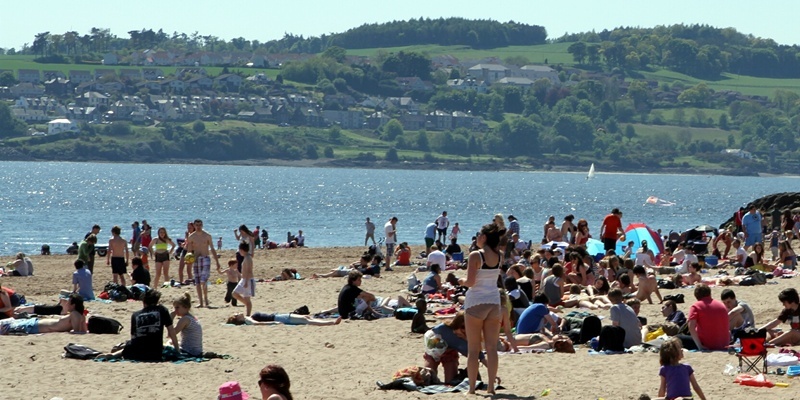An underground visitor centre at Broughty Ferry beachfront could attract more than 60,000 visitors a year, a study has found.
But the community group behind the proposals has been warned that it faces a ”major challenge” in raising the up to £2.7 million needed.
Broughty Ferry Development Trust (BFDT) hopes to make use of the earth mound between Castle Green and the beach for an eco-friendly building that could contain a cafe/restaurant, shop, changing rooms and a gallery about local heritage and natural history.
It has received a report from the Glamis Consultancy that says market testing of the concept proved ”very positive” with people seeing it as an attractive leisure destination for family visitors.
Estimates of visitor numbers range from 52,000 to 66,000 a year and it would be possible to run it at a profit, assuming income was at least close to £200,000 a year.
The report says: ”The eco building would be a focus for encouraging visitors to the beach and Esplanade area, and could play a vital role in the development of Broughty Ferry. The building would be a reception venue for visitors as well as a family attraction beside the seaside incorporating a range of facilities and services on a year-round basis.”
The consultants reckon there are now two ways to proceed: either the development trust takes on the project itself or it lets another organisation take over, although it is not clear at this stage who that might be.
They say: ”The critical risk is the need for BFDT to clarify its role in the project. Assuming it does so, the lack of clear sources of capital funding represents a further critical risk to the project.
”A detailed fundraising strategy would be required but this would still require a mix of grant funding and commercial or corporate sponsorship.
”Because of this we envisage that project completion would be unlikely before 2015 at the earliest.”
The report cautions that the centre is unlikely to be attractive to a private sector developer.
”If the centre was developed as a community-based, social enterprise project, it may offer scope for local businesses or social enterprises to operate it on a franchise basis. However, it faces a very strong challenge in securing funding as the project is likely to be ineligible for the main sources of grant funding.”
The project is thought to be worthy of further study, to the point where funding support has been fully investigated.
However, if no ”project champion” can be found then a Plan B may be appropriate such as the provision of a more modest cafe and beach changing area if this is adequate to meet customer requirements.
The consultants have recommended BFDT sets up a project group to consider the next steps in detail. This could include the city council, the Ferry local community planning partnership, Leisure and Culture Dundee and outside bodies such as Scottish Natural Heritage and Historic Scotland.
The development trust’s management committee will discuss the report at its meeting next week.
Chairman John Dobbie said last night: ”Lots of people would like to see this happen. We will consult with the whole membership to see how they would like this to be taken forward.”
He admitted the capital funding was a big issue but added: ”It’s not something that can’t be overcome.”
